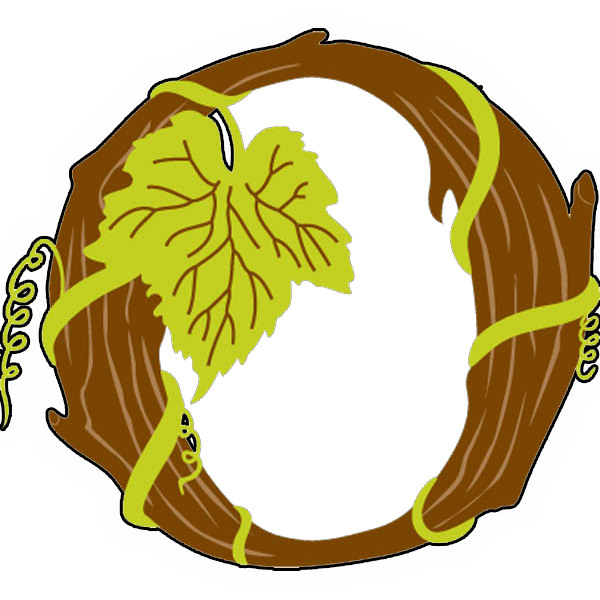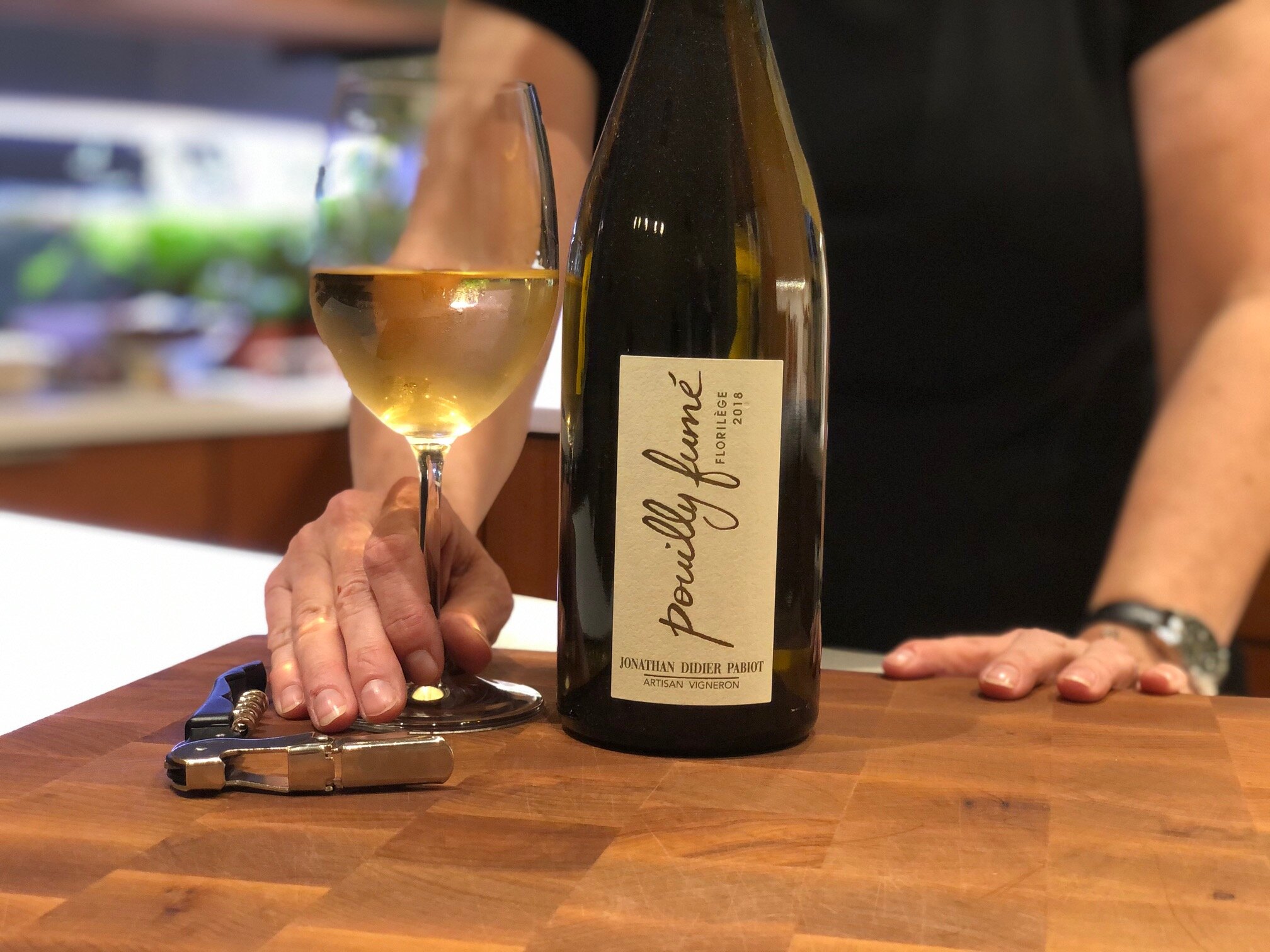Loire Valley, France
Domaine Jonathan and Didier Pabiot
A fifth- generation vigneron, Jonathan started out with a small parcel planted by his grandfather and some rented vines. He immediately converted to organic farming methods in the vineyards and gained certification. Eventually, he and his father, Didier, combined their estates and converted all the vines to organic agriculture. The modern winery is Les Loges but the vineyards span five different communes which contain a microcosm of the soils of Pouilly-Fumé: Kimmeridgian, chalk and silex. One of a handful of domaines in the appellation to farm both organically and biodymanically, the Pabiot vines are a picture of health and vitality.
As a winemaker, Jonathan’s methods direct and simple. The grapes are picked and sorted by hand and go through a slow, natural yeast fermentation and are left to rest on the lees. His classic Pouilly-Fumé has an epic expression of the both the Sauvignon Blanc grape and the terroir of the vineyard.
Pouilly-Fumé - Florilége
Domaine Henry Pellé
The Domaine Henry Pellé is synonymous with Menetou-Salon. Indeed, it was Henry himself who single-handedly elevated the reputation of this tiny satellite of Sancerre through meticulous farming and informed winemaking. The estate has about 40 hectacres of organically farmed vines in the heart of the appellation around the village of Morogues. The soils are mainly the amazingly calciferous Kimmeridgian limestone made up of billions of tiny, ancient sea shells. It is these specific soils that give the wines their brightness and nervosity.
In the cellar, the wines are fermented with ambient yeast and left to rest sure lie. Henry’s grandson Paul- Henri now makes the wines. With such superior concentration and brisk acidity, they have practically a cult following among lovers of Loire wine.
Menetou-Salon Blanc - Les Bornés
Menetou-Salon - Morogues
Domaine Paul Cherrier
Domaine Paul Cherrier has been in the family for six generations but has only been solely devoted to viticulture since the early 1980s. When Stephane Cherrier returned to the domaine for the 2000 harvest after viticultural travels in Australia, New Zealand, and Chile, he convinced his grandfather to begin bottling wine from the best cuveés. At present, one-third of the domaine’s production is bottled.
The vineyards are scattered around Verdigny on clay-limestone soils. The wines are fermented in stainless steel and aged on their lees. The Sancerre Blanc is a selection of the best cuvées in the cellar chosen for bottling. The result is an expression of the age of the vines. The red rests for nine months in neutral barrique. Stephane wants the wines to make themselves so there is very little intervention in the cellar.
Sancerre
Sancerre Rouge
Domaine Pothiers
Just northwest of Lyon on the gently rolling foothills of the Monts de la Madelein, lie the vineyards of the Côte Roannaise. This tiny appellation is the southernmost part of the Loire Valley is located near the very source of the great Loire River. Its granitic soils are particularly hospitable to the Gamay Saint Romain grape which has been planted here for centuries. The Paire family has lived in the village of Villamontais for over three hundred years. The youngest generation, Romain Paire has joined his parents, Georges and Denise in shaping the family winemaking business, of bridging the ancient and the modern. Romaine is producing scintillating, authentic gamay and some thrilling whites, as well. The farming is certified organic and biodynamic. Fermentation is done exclusively with indigenous yeasts.
Chardonnay Vin de Paysd’Urfé - Fou de Chêne
Côte Roannaise Gamay - No. 6
Côte Roannaise Gamay - No. 6 MAGNUM
Côte Roannaise Rosé of Gamay - Granit
Vignerons de Saumur
“49 M” refers to the 49 million bubbles in every bottle, just waiting to be released. The 49 M Crémant de Loire was developed by our partner in wine, Annette Peters of Domaines and Appellations in Minneapolis. Ms. Peters worked directly with the enologist of the Caves de Saumur to create this bubbly that exudes both the freshness, precision and minerality of Anjou Chenin Blanc.
The wine starts with hand-picked fruit and is raised in limestone caves which provide a uniquely ideal environment for the élevage of sparkling wine. The wine spends two years on the lees before disgorgement.
49 M Crémant de Loire
49 M Crémant de Loire Rosé
Les Bêtes Curieuses
Les Bêtes Curieuses is the joint project of two young, passionate vignerons, Jérémie Mourat of J. Mourat in the Vendée and Jérémie Huchet of Chateau Thébaud in Muscadet. Les Deux Jérémies, friends and partners in wine since 2005, created Les Bétes Curieuses to produce wines that highlight the nuances of the great terroirs of Muscadet.
Muscadet, which lies at the mouth of Loire River and enjoys the breezes of the Atlantic Ocean, has a unique combination of amphibolite and limestone soils that are particularly friendly to the cépage Melon de Bourgogne. They make four crus plus “La Perdrix l’Année” which translates to “spring chicken”. The Perdrix is an early release wine and thus has the simple Muscadet appellation.
All the wines are certified organic and are made “a lá Nantais”. Only indigenous yeasts are used and the wines rest on the lees in subterranean cuves which allow for natural temperature variation. There is no racking or batonnage. The slow, deliberate yeast autolysis gives the wine complexity and freshness.
La Perdrix de l’Année Muscadet
Christian Venier
In Cheverny, in the eastern part of the Touraine, Christian Venier tends a wide variety of grape vines over six hectares varied with silica, clay and stones. He made his first cuvées in the mid- nineties and began to eschew “factory” farming and chemical wine making. He adheres to organic methods in the vineyards and non-interventionist in the cellar.
Cheverny - Le Clos de Carteries
Cheverny - Les Hauts de Madon
Domaine de la Chapinière
After a career in finance, Florence Velex traded in her math degree for a one in enology. She and her husband decided to follow their dreams and become vignerons. They revived 25 acres of vines in the Touraine and created La Chapiniere. The clay and flint vineyards are situated on a stony plateau overlooking the Cher river.
Currently, Florence adheres to the rules of sustainable development and is certified by Terra Vitis.
Touraine Sauvignon Blanc
Julien Courtois
In the Sologne, Julien Courtois and Heidi Kuka farm 4.5 hectares of indigenous grape varieties such as Romorantin, Menu-Pineau, Cot, Gascon and a variety of Gamays. The once- damaged soils were painstakingly restored and now both flora and fauna thrive in harmony with nature in the vineyard. The soils in this part of the Loire Valley are red clay mixes with silex and silica.
Following his father, Claude, Julien practices natural winemaking which eschews any chemicals in the vineyard, insists on natural yeast and limits the use of sulphur. The wines spend anywhere from 12-18 months aging in old foudre. The wines are designated as Vin de France in lieu of the AOC.
Vin de France Blanc - Originel
Vin de France Rouge - Ancestral
Clos la Niverdiére
Belgian- born Martine Budé spent twenty years in the Land of Rabelais before meeting her destiny of becoming a vigneronne in Beaumont-en-Veron in 2015. Three of her five hectares of Chinon vines are in the Clos la Niverdiére, one of the treasures of the appellation. The Clos is known for its soft soils: sandy limestone with a base of soft chalk.
Budé learned good lessons of vineyard management and yield control from her neighbor, the highly-regarded vigneron Philippe Alliet. All the fermentations are performed in frustoconical concrete tanks using exclusively indigenous yeasts. The wines are the epitome of elegance.
Chinon - Palimpseste
Chinon - Résilience
Domaine Florian Roblin
Thirty kilometers above Sancerre and Pouilly- Fuissé, Florian Roblin farms 5 hecatres of vines in the tiny Coteaux du Giennois appellation. A native to the region, his early interest in viticulture neatly coincided with the chance to revive a family plot of vines, the “Champs Gibault”. With a farming degree and stages at François Villard and Jean-Louis Trapet, he struck out on his own. So far, he is a one- man operation, performing the vineyard work, the cellar work and the marketing.
The farming is finely tuned to the health of the soil and vine; his work in the cellar is also to work as naturally as possible. The idea is to let the product of the vines reflect the soil of the vineyards, a thin layer of clay protecting pure chalk and flint underneath.
Coteaux du Giennois - Champ Gibault Blanc
Coteaux du Giennois - Cham Gibault Rouge


















